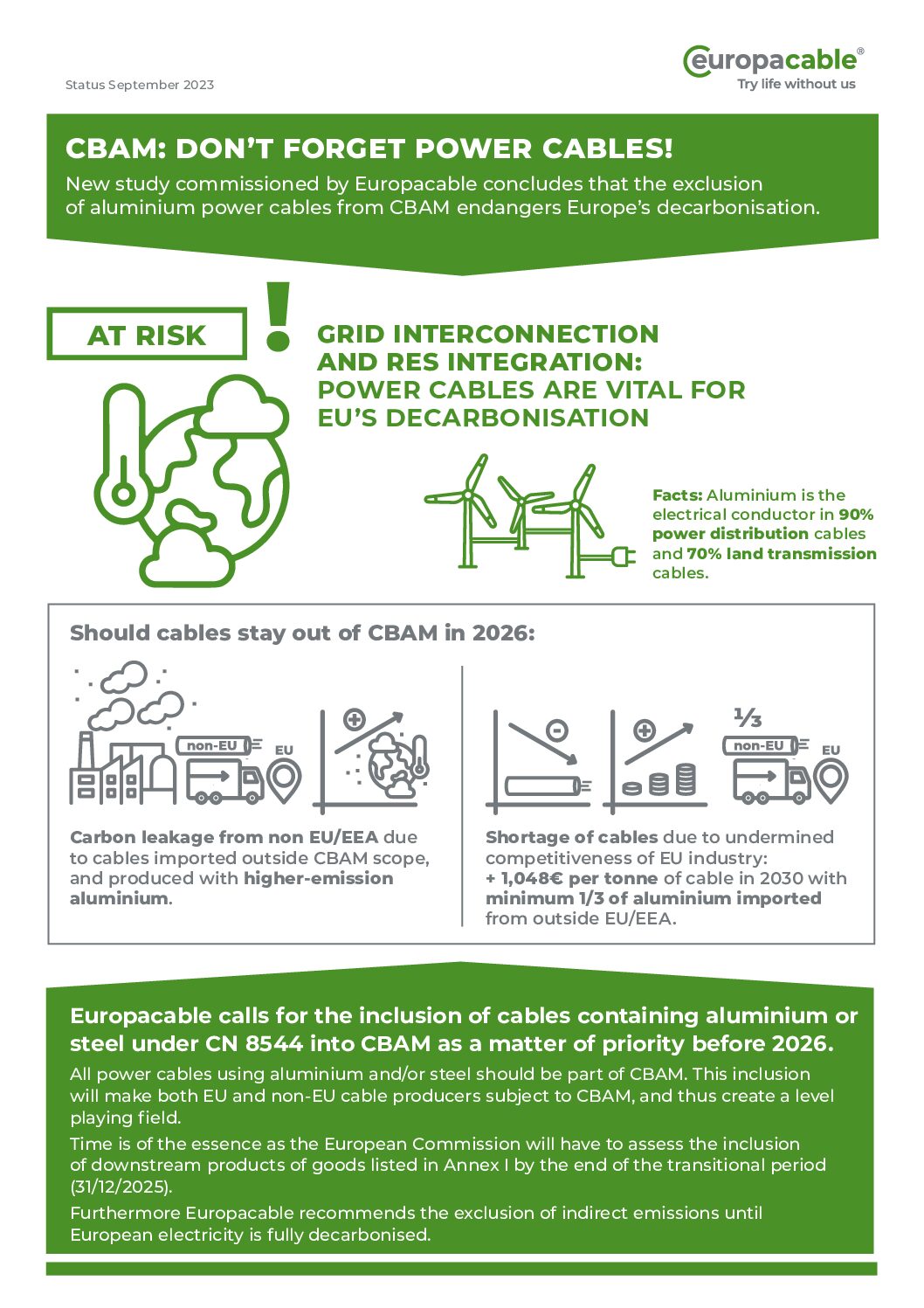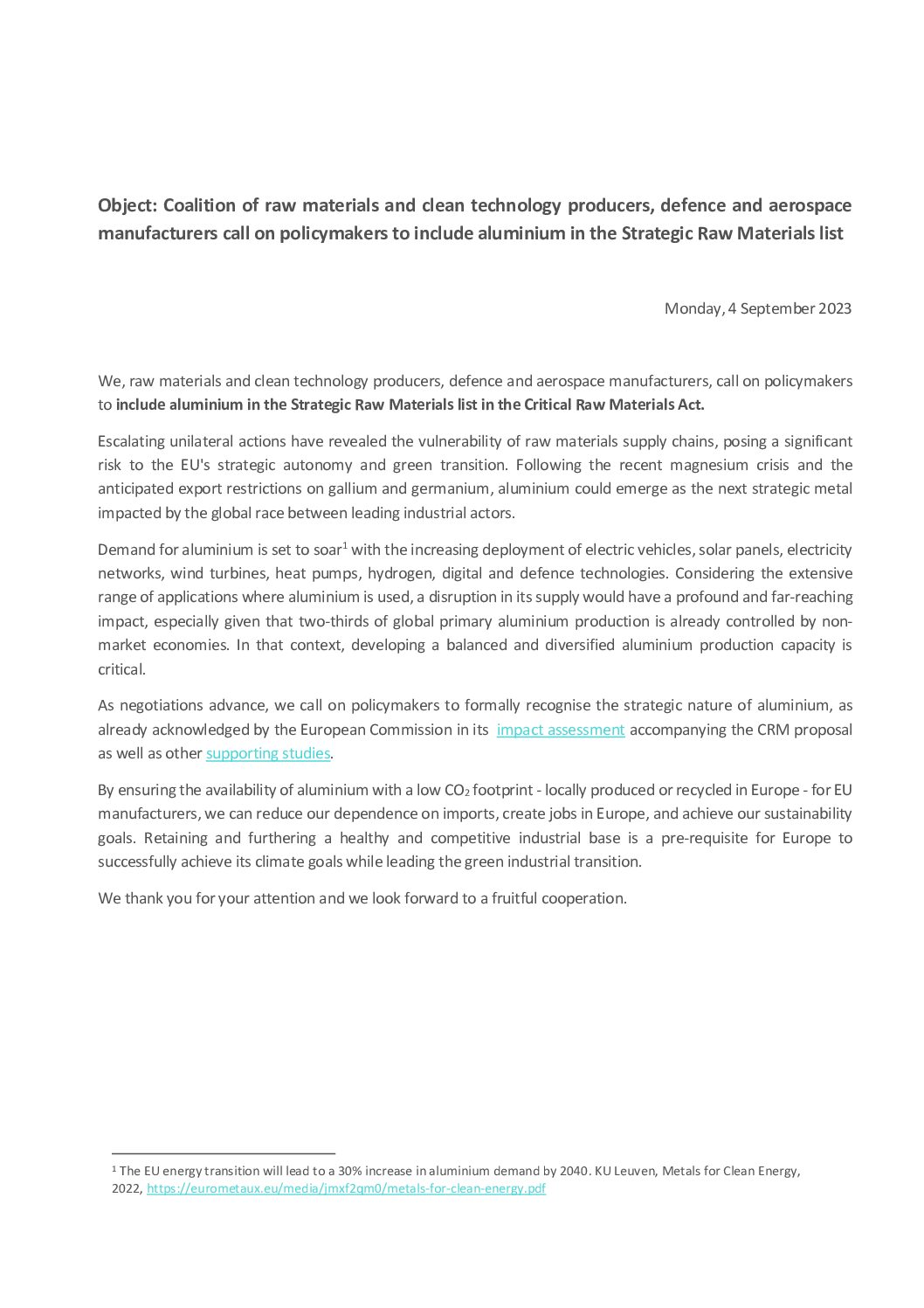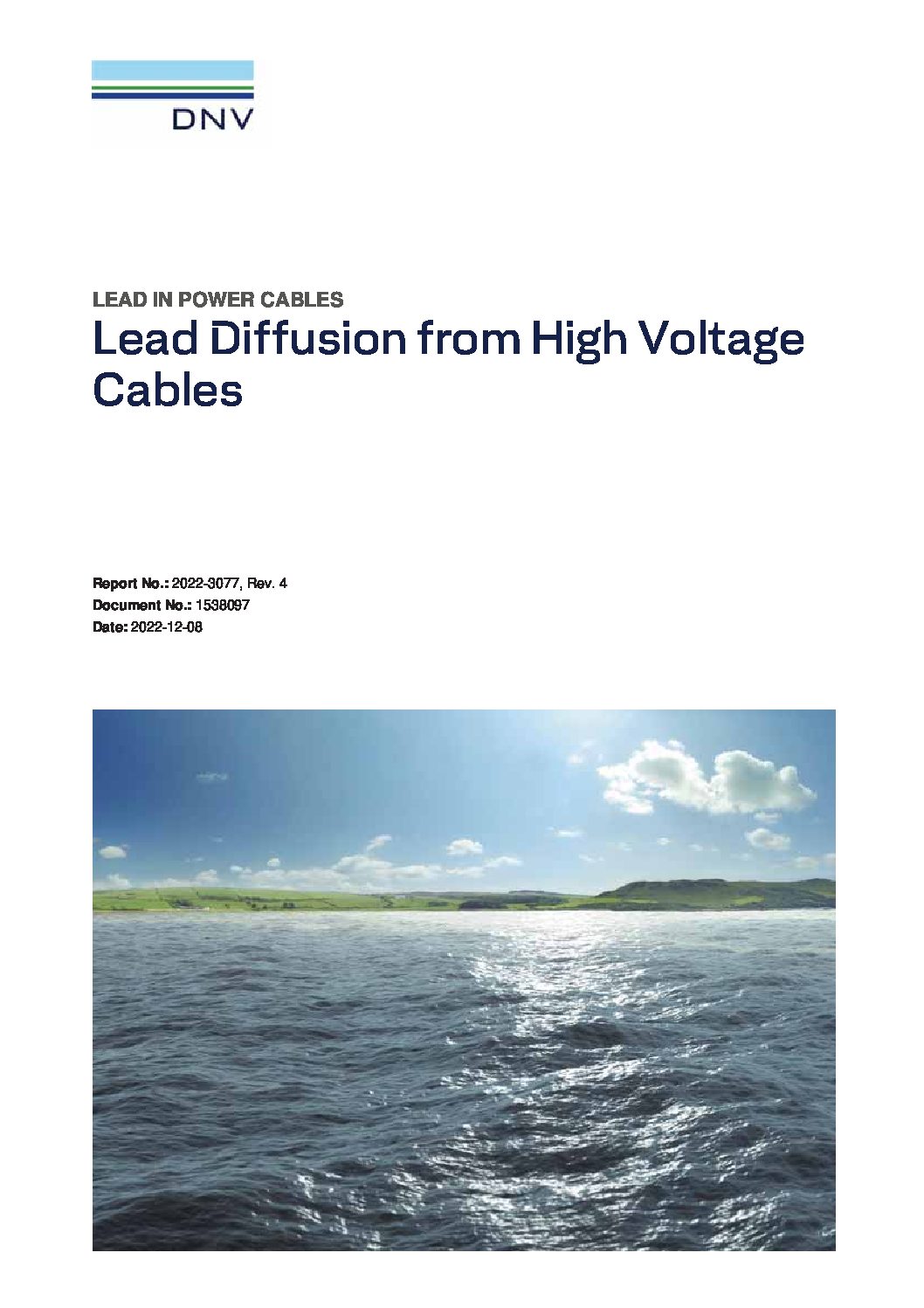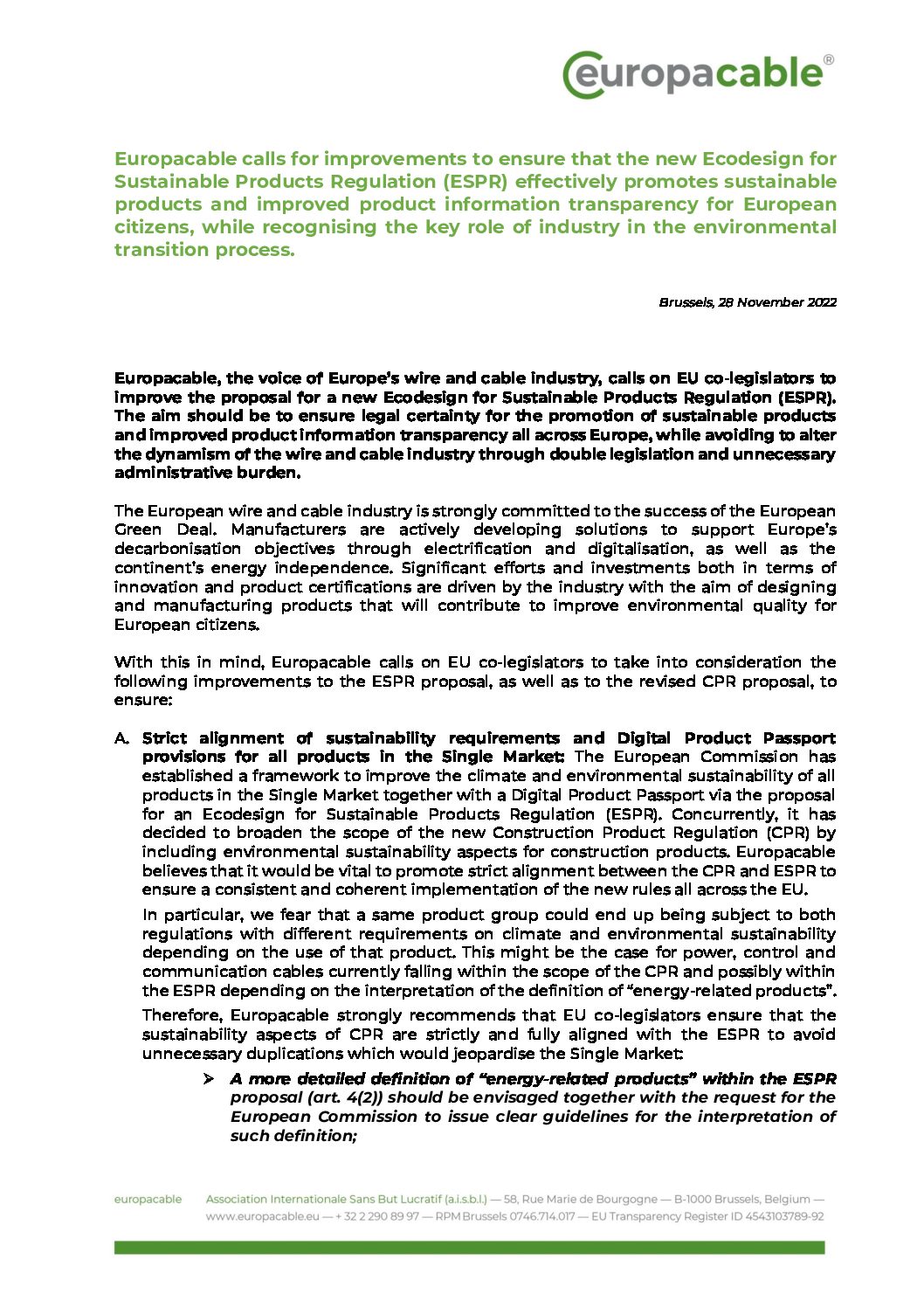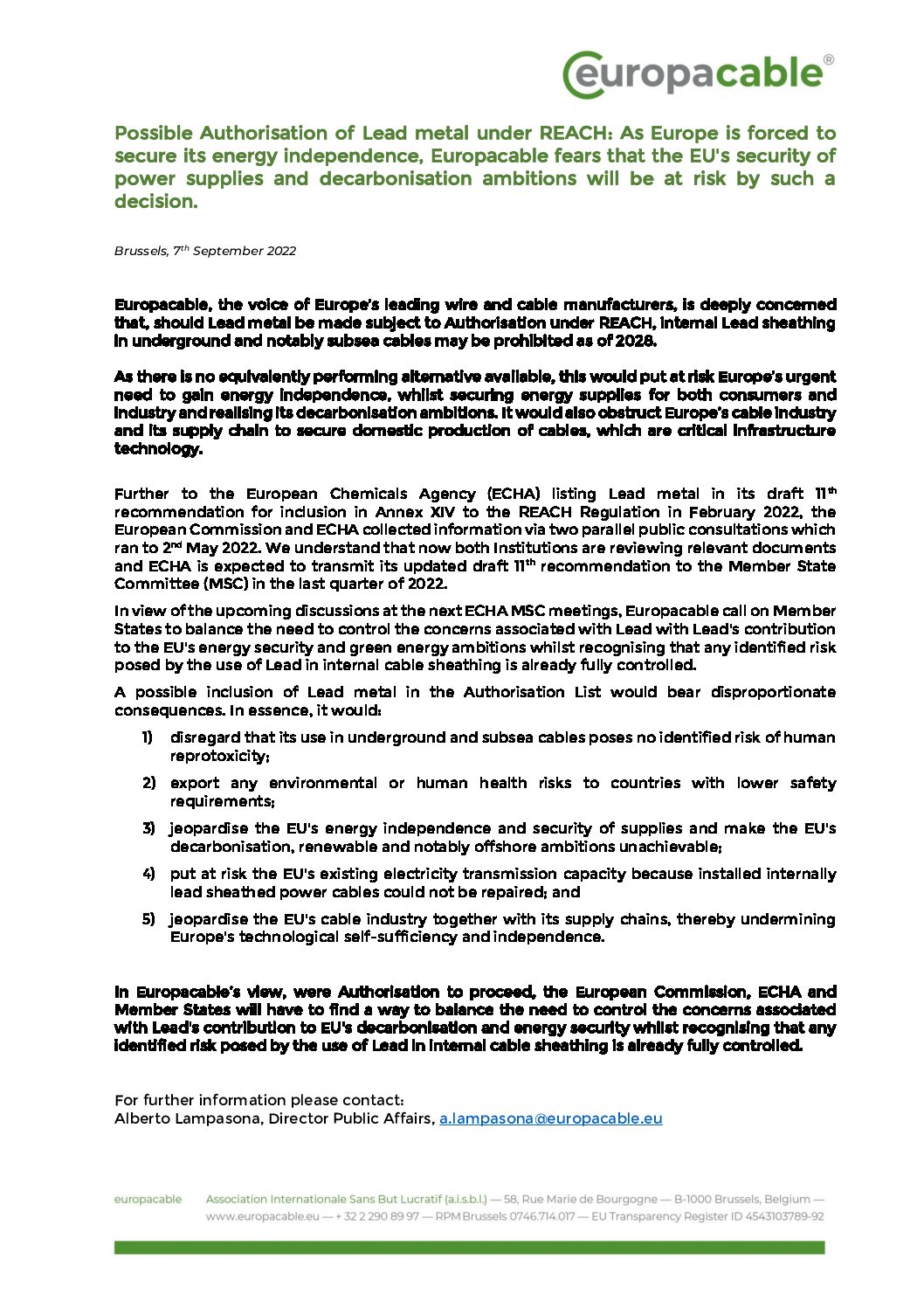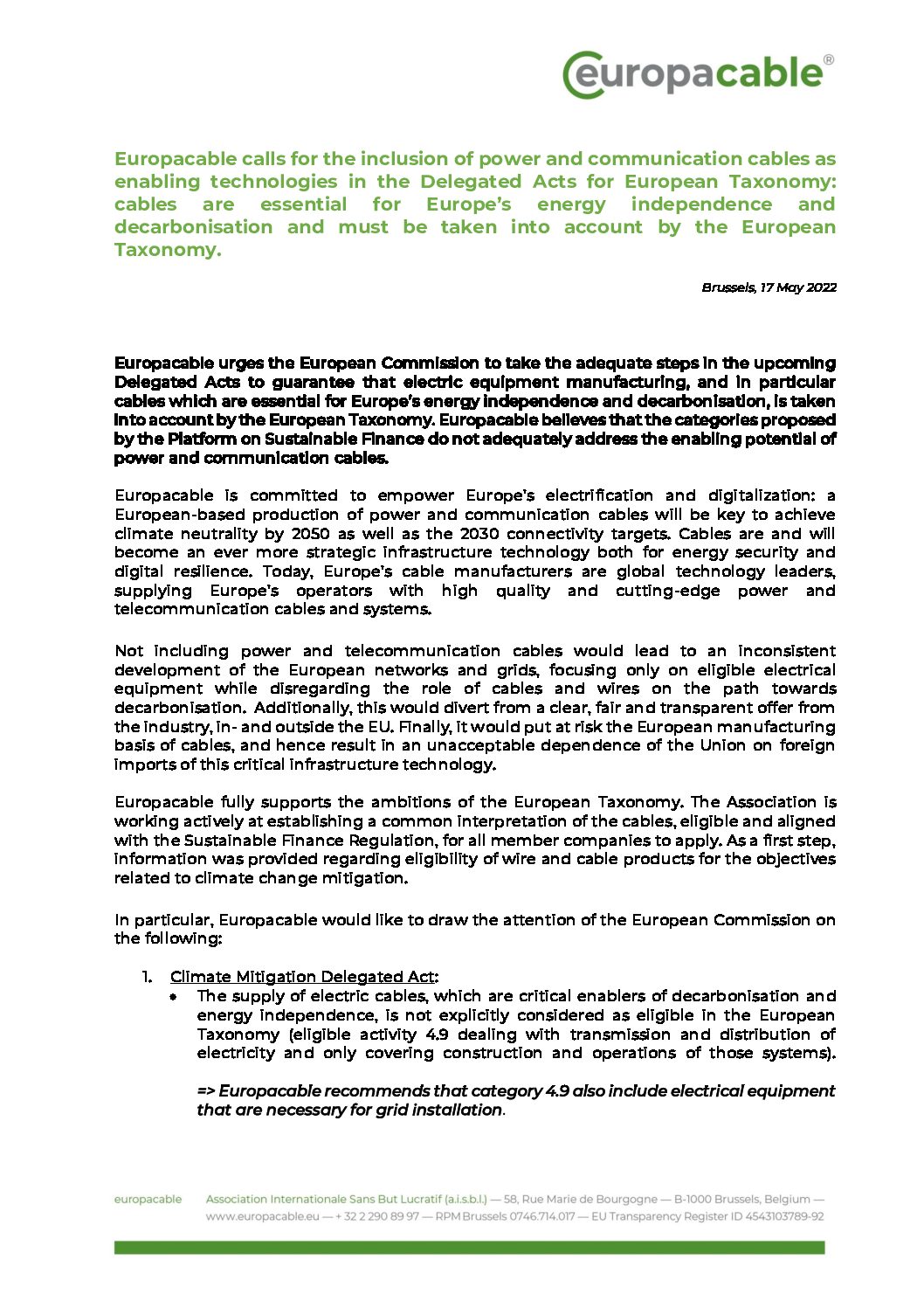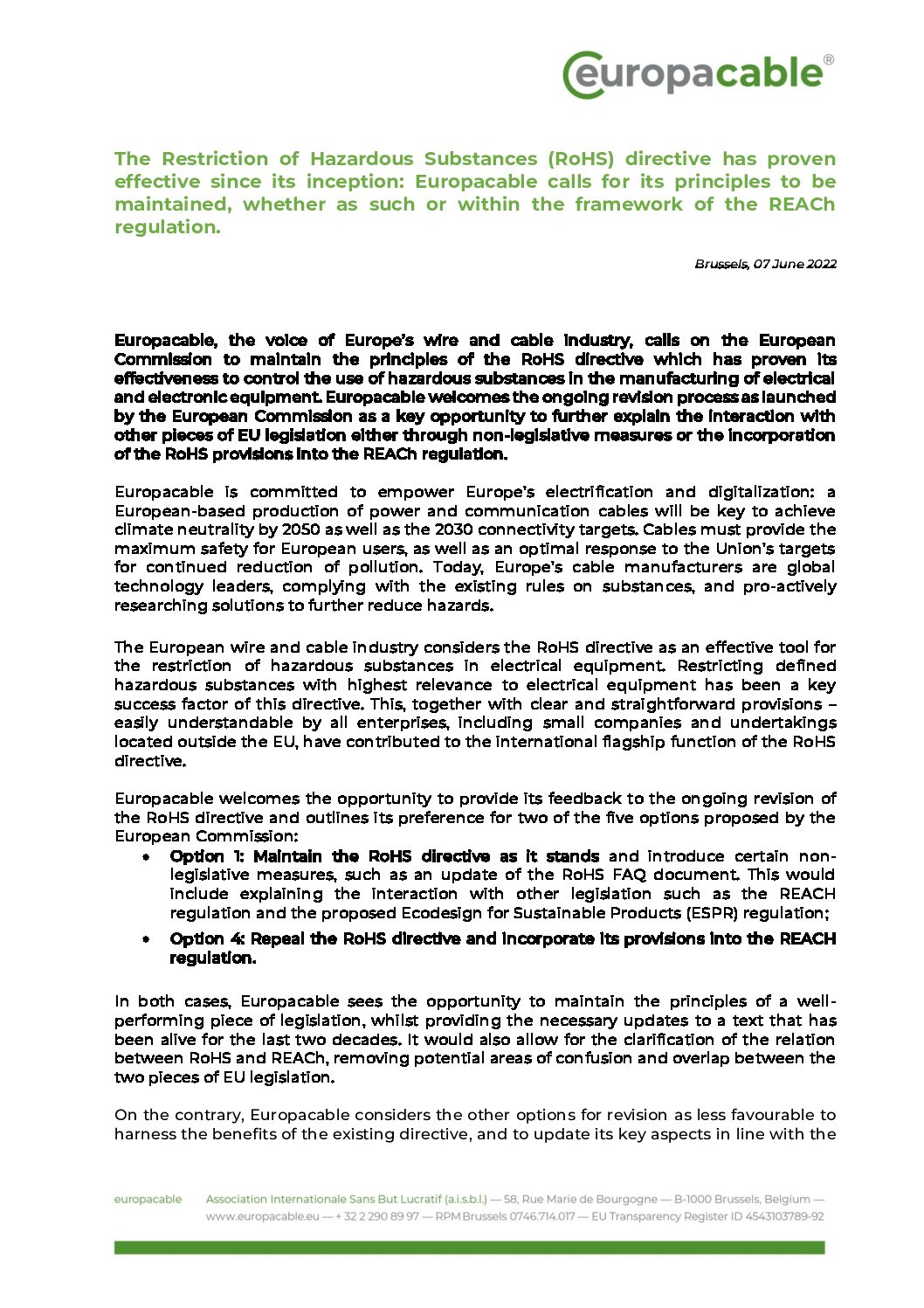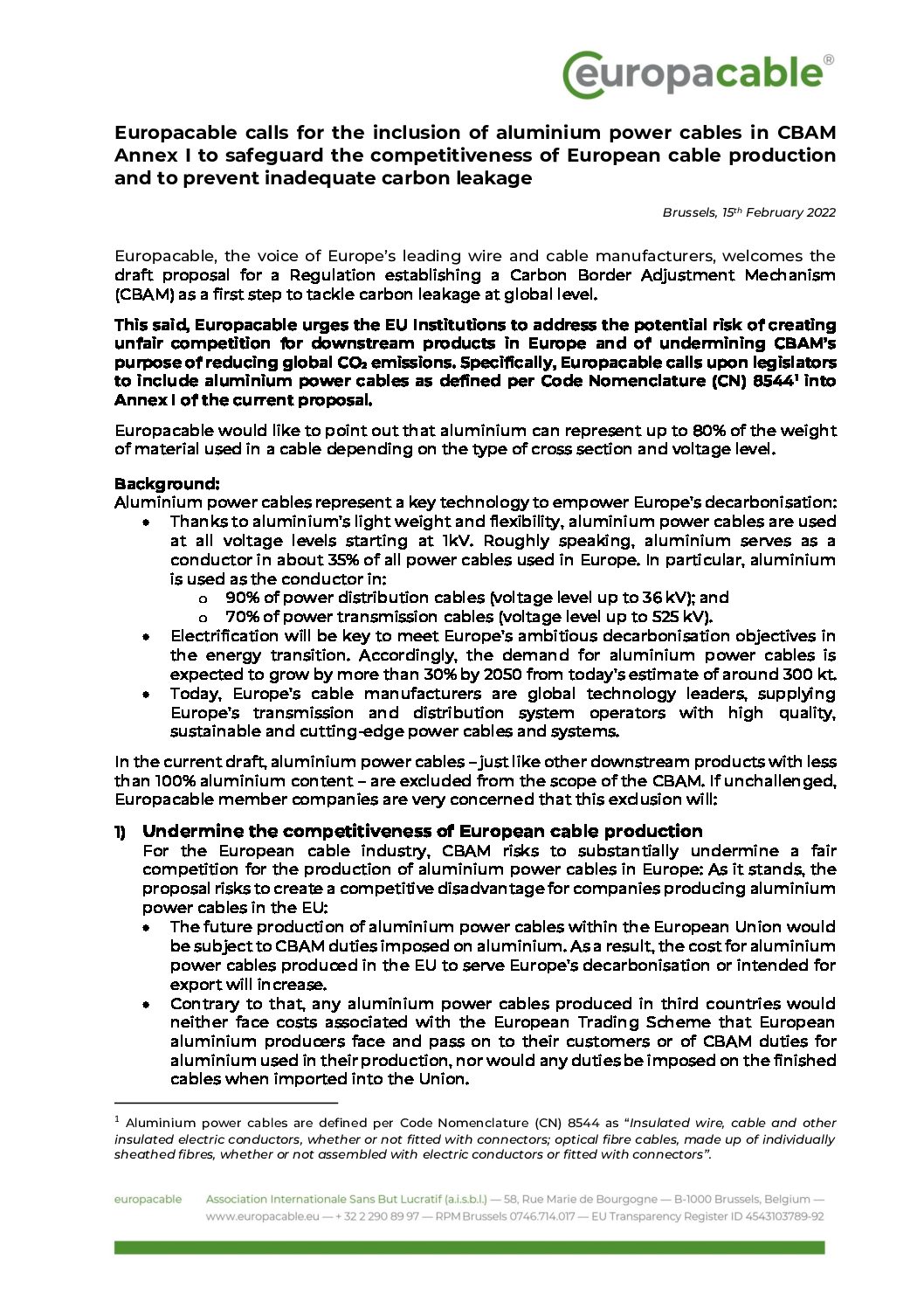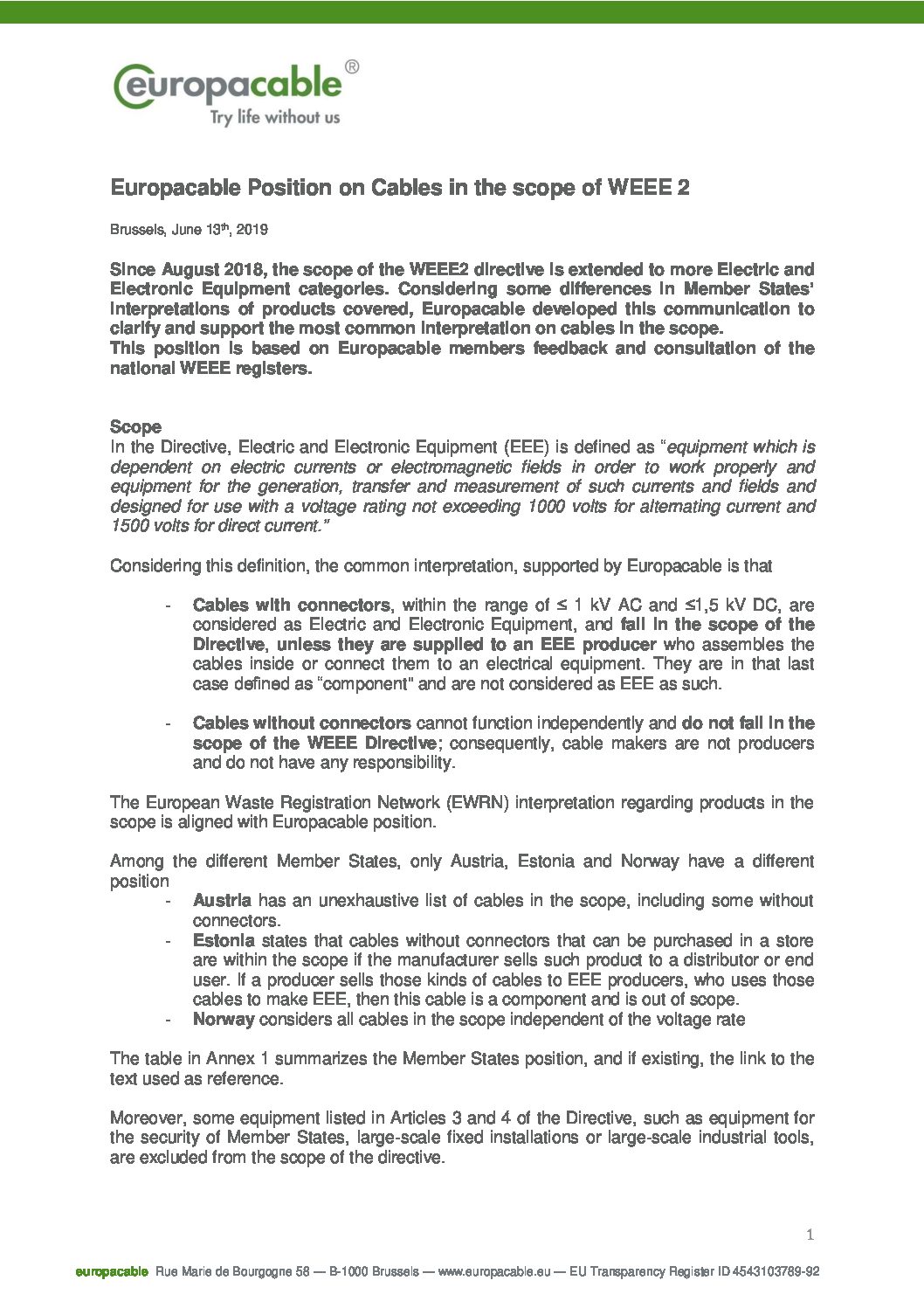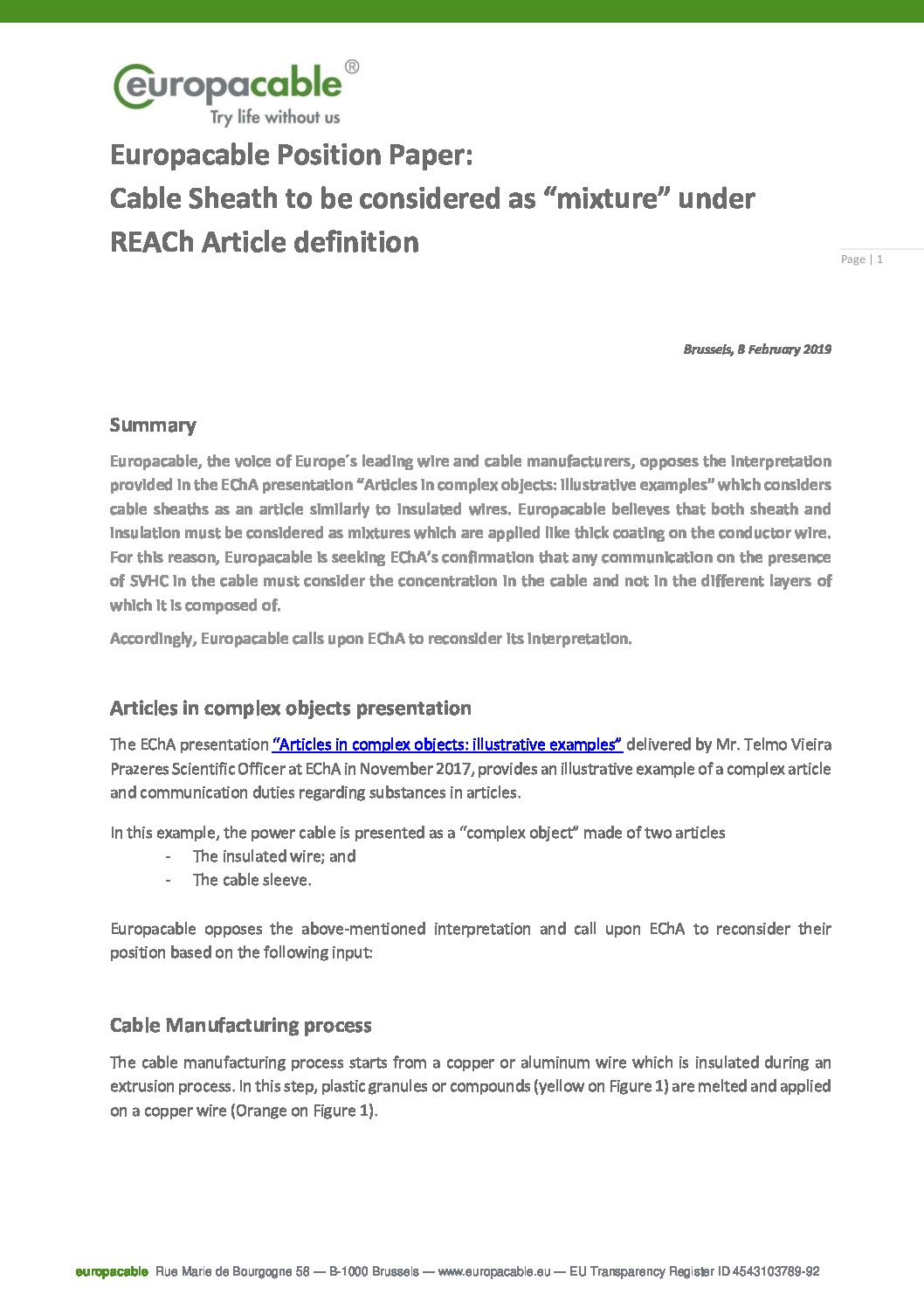«Europacable is actively supporting its members in their responsible efforts to address climate change and to preserve resources.»
– Sophie Barbeau, Chair
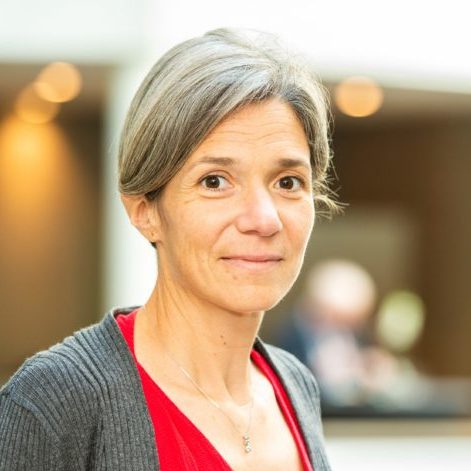
Sustainability is a key element of Europacable’s identity
As leading European cable manufacturers, Europacable members are committed to tackling climate change and to shaping a sustainable future based on four key pillars:
- Climate: Europacable members are dedicated to addressing climate disruption by actively working towards achieving net-zero emissions. Through innovative solutions, members aim to minimize European cable manufacturers’ carbon footprint and contribute to a cleaner environment.
- Substances: Europacable members ensure the protection of human health and the environment by implementing stringent measures to minimize the use of hazardous substances and by selling products that are safe and compliant with all EU regulations.
- Circularity: Europacable members embrace circularity as a means to reduce their impact on resources. By adopting efficient design, promoting recycling, reusing materials, and implementing circular economy principles, they strive to create more sustainable industrial processes.
- Supply chain: Europacable members are committed to rethinking global flows within their supply chains, ensuring responsible sourcing, promoting ethical practices, and fostering transparency and accountability.
Training programmes play an important role in driving the environmental transition agenda within the cable industry. Europacable is supporting its members by circulating information, organising workshops and training sessions to educate member companies and the market regarding climate change mitigation.
TOPICS
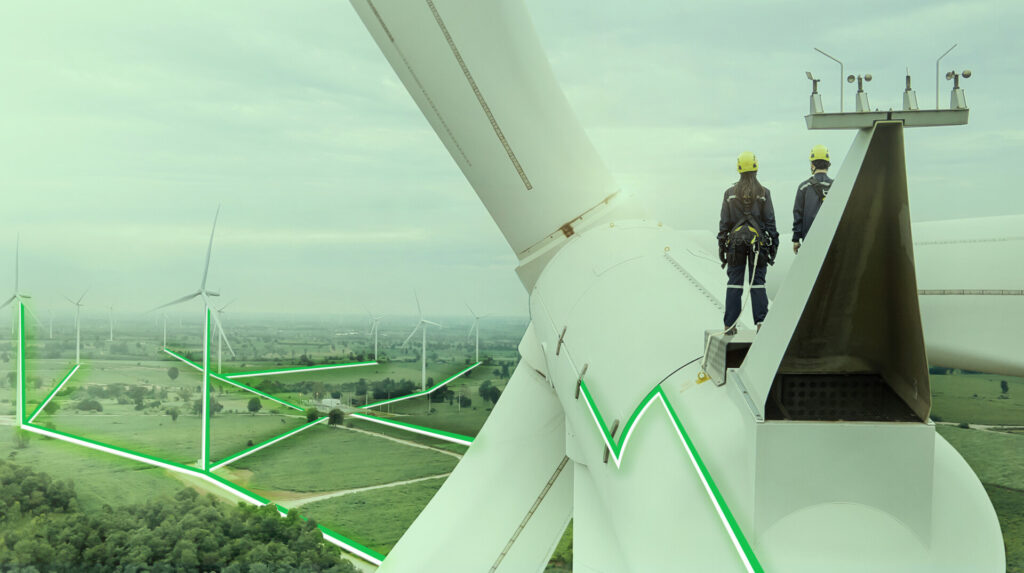
Europacable members recognise the urgent need to transition towards sustainable practices to mitigate climate change. Thus, they are taking significant steps to align with Europe’s net-zero targets.
Europacable members embrace the EU Taxonomy Regulation as a guiding principle. Aligning with the EU Taxonomy Regulation empowers investors, customers, and stakeholders to foster sustainable investment, whilst supporting companies that are actively driving environmental-friendly practices.
Furthermore, Europacable members are reducing their carbon footprint throughout their production and commercialisation processes, from sourcing raw materials to manufacturing and distribution. By optimising energy efficiency, adopting renewable energy sources, and implementing circular economy practices, they are minimising their environmental impact.
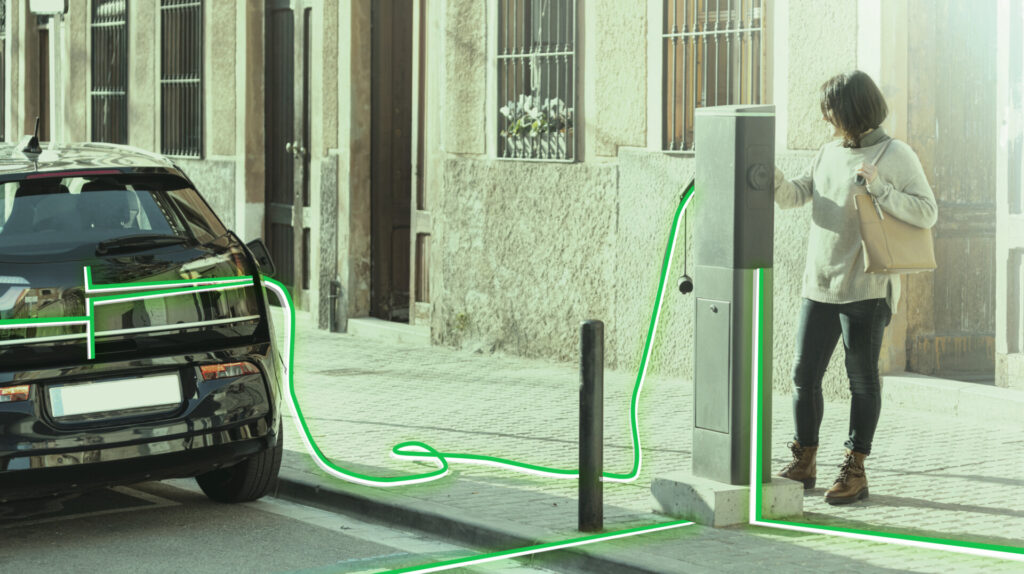
Europacable members are limiting the use of hazardous substances in their products, taking proactive steps to ensure compliance with stringent EU regulations and contribute to scientific advancements in this area.
The EU has implemented comprehensive regulations, such as the RoHS Directive and the REACH Regulation, that protect human health and the environment from the risks associated with hazardous substances. In response, Europacable members have invested in research and development to qualify alternative materials that meet the required safety standards while minimiqing the use of such substances.
Moreover, Europacable members assume their roles in driving innovation and promoting the development of safer and more sustainable materials and manufacturing processes.

Europacable members focus on implementing circularity principles to promote sustainable products and to minimise their environmental footprint throughout the entire design and production process. By embracing circular economy concepts, Europacable members aim to reduce waste, to preserve resources, and to extend the lifespan of their products.
To achieve this, Europacable members have adopted strategies to design and to produce products applying eco-design principles. Manufacturers prioritise the use of recycled and recyclable materials in their cables, ensuring that the materials can be easily recovered and reused at the end of their life cycle. By increasingly incorporating recycled content into their products, they reduce the demand for virgin materials and minimise the extraction of natural resources.
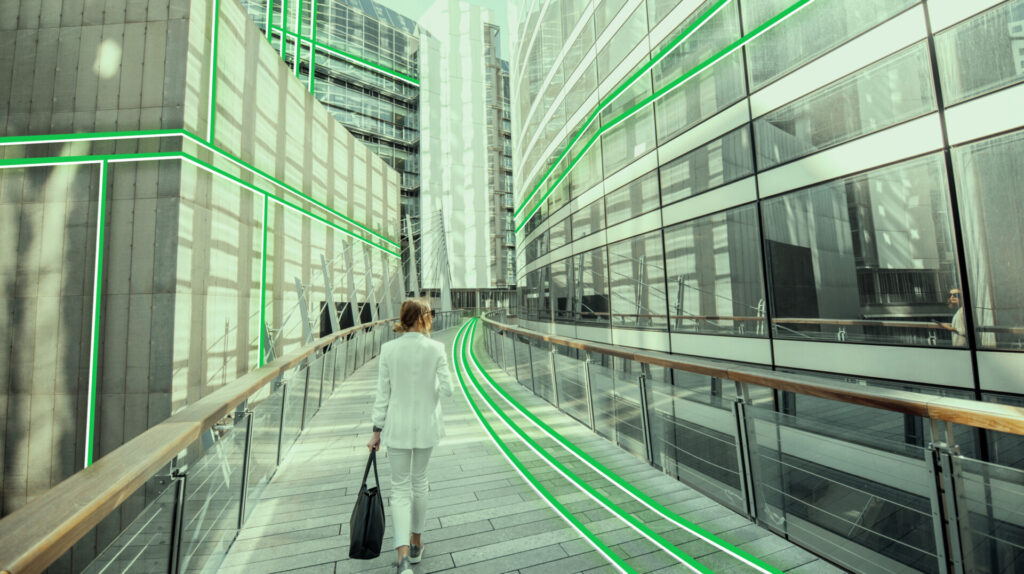
Europacable members also implement circularity principles throughout their operations, ensuring a more efficient supply chain through material sourcing, transport and logistics.
Europacable members are enquiring suppliers to ensure they provide responsibly sourced materials. They prioritise suppliers who follow ethical and environmentally friendly guidelines, ensuring that the raw materials used in their wires, cables and accessories have a minimal negative impact on the environment and preserve human rights.
Transport and logistics also play a significant role in achieving circularity goals. Europacable members optimise their transportation and warehousing processes to curb emissions, reduce energy consumption and employ efficient packaging to limit waste. Thus they aim to reduce the overall carbon footprint associated with their operations.
Furthermore, Europacable members evaluate the sustainability practices of their suppliers, verifying that they meet environmental and social standards. This due diligence extends to the entire supply chain, promoting transparency and accountability in sourcing and production processes.
